‘The system is defending police shooters instead of putting them on trial’
Israeli authorities are systematically dismissing probes into police officers who 'shoot to kill' Palestinian assailants as a first resort, says rights group.
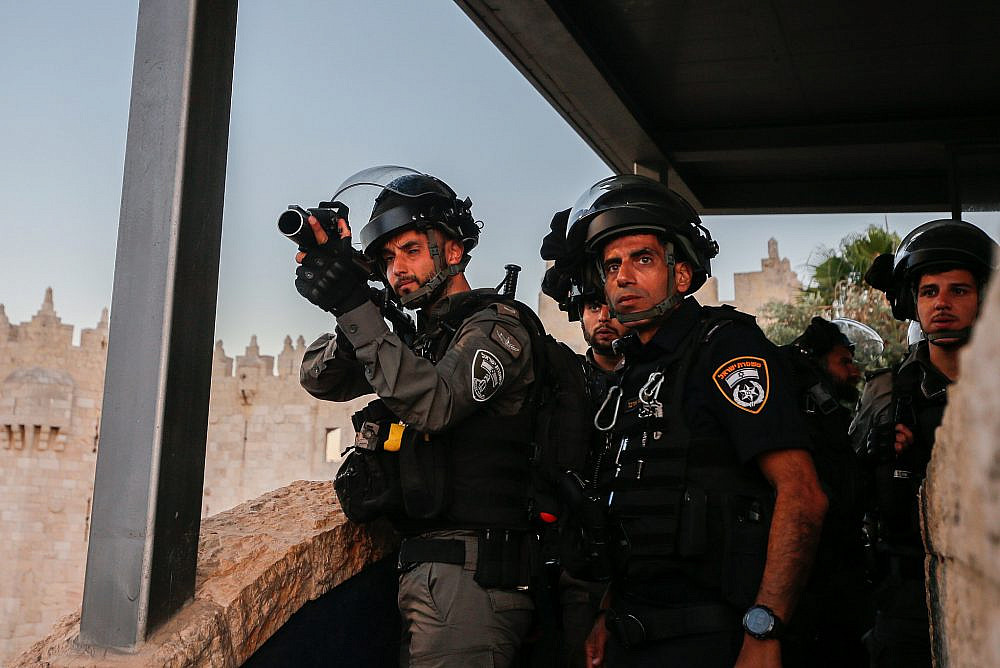
Less than a week after Israeli Border Police shot dead a Palestinian who had stabbed an ultra-Orthodox Jewish man near Damascus Gate in Jerusalem, the State Attorney’s Office decided last Thursday to close an internal investigation into the conduct of the officers.
Footage of the incident showed Muhammad Salima, 25, carrying out the stabbing attack before being shot once by the nearby police officers. While Salima lay on the ground wounded and incapacitated, an officer circled around and fired two additional shots directly at him, killing Salima instantly.
The Justice Ministry said that the investigation was shelved because “there was a real and tangible danger to the lives of the soldiers and civilians,” and as a result, “there was a legal justification for the use of [lethal] weapons.”
The very opening of an investigation by the Police Investigation Unit (known colloquially as “Mahash”) — which takes place in nearly every case in which officers kill a person living under Israeli civil jurisdiction, including occupied East Jerusalem — was widely criticized among the Israeli public. Prime Minister Naftali Bennett, government ministers, and the police chief openly backed the shooting officers.
The requirement to open an investigation in such cases is a result of a precedent-setting High Court ruling in 2019 following the killing of Kheir Hamdan, a Palestinian citizen of Israel from Kufr Kanna who was shot dead by police in 2014. Although a Mahash investigation cleared Hamdan’s killer of wrongdoing, the High Court ruled five years after the incident that the death was a matter of public interest and ordered that the officer face trial.
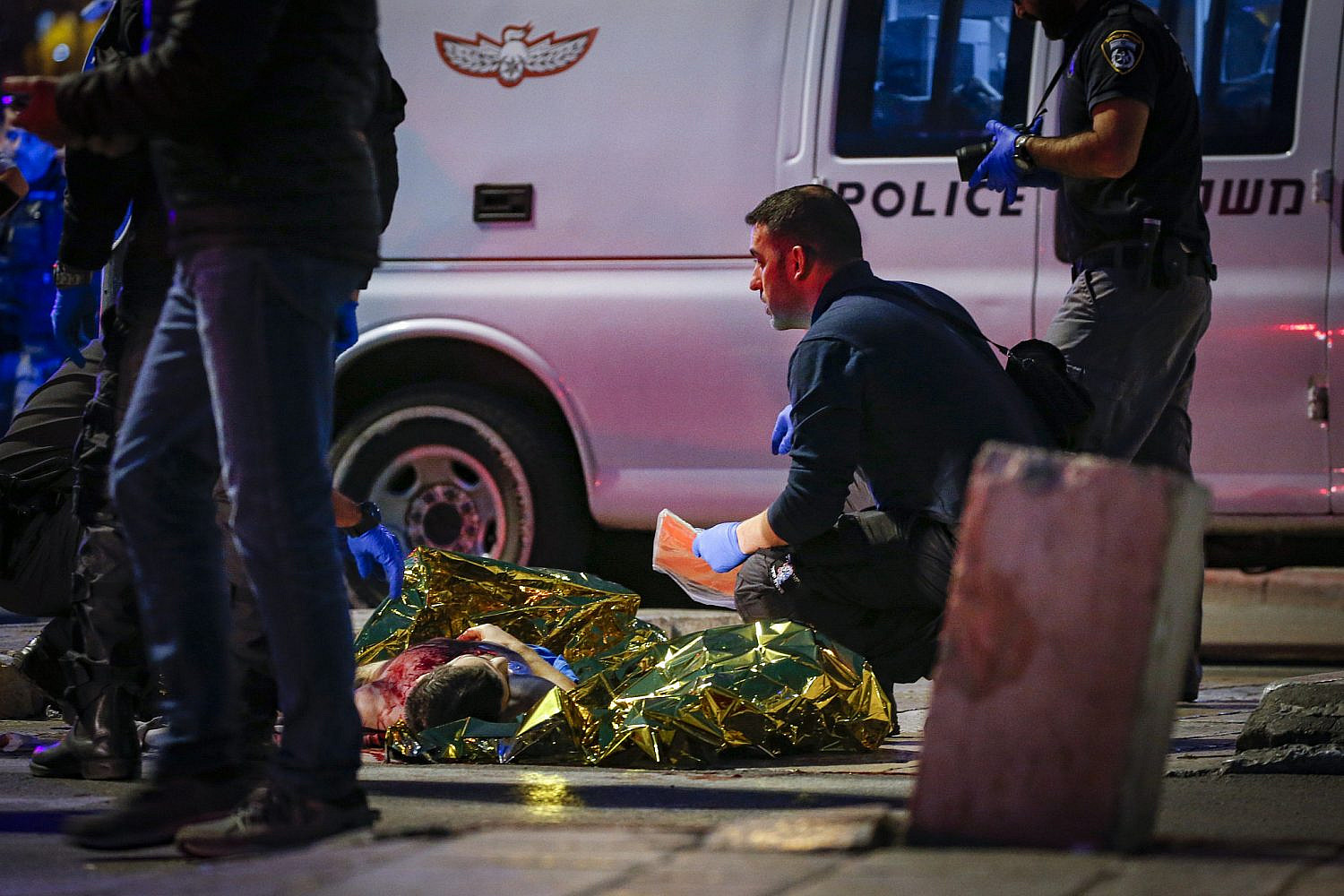
The closing of the Salima case was widely reported in the media, but it is not out of the ordinary. Since 2015, Israeli forces have shot dead at least 38 Palestinians — including Israeli citizens, Jerusalem residents, and other residents of the occupied West Bank — who were allegedly carrying out or attempting to carry out stabbing attacks in Jerusalem. These numbers do not include incidents in which Palestinians combined stabbing with shooting or vehicular attacks.
Included in these figures is the infamous killing of Iyad al-Hallaq, a 32-year-old Palestinian with autism who was chased down and shot dead by Israeli police officers in the Old City of Jerusalem in May 2020. The authorities later admitted al-Hallaq did not actually pose a threat to the officers. Al-Hallaq’s case was the only incident in which a police killing of a Palestinian under what they initially deemed a “security” incident led to an indictment against an officer.
To examine some of the patterns behind these figures, Adalah, a Haifa-based Palestinian legal center, looked into five cases of Israeli police killings of Palestinians in East Jerusalem in 2015-2016, during what was known as the “knife intifada.” The legal proceedings shine a light on the way in which the authorities treat attempted stabbing attacks by Palestinians on Israeli forces and civilians, and the justifications they offer to cover for the police’s “shoot-to-kill” policy.
According to Adalah, Mahash did not open any investigation into three of the five killings examined, while in the two other cases, Mahash closed the investigations after concluding that the officers did not commit any violation. Adalah filed appeals to the State Attorney in all five cases, but the latter decided not to intervene in Mahash’s decision.
“The fact that the vast majority of these cases end in death should raise many question marks,” said Adalah’s Suhad Bishara. “This is not the exception but the rule. That there are multiple cases of shooting to kill shows we’re dealing with something systematic. This should be a red light not only for human rights activists, but also for decision-makers and the investigative authorities.”
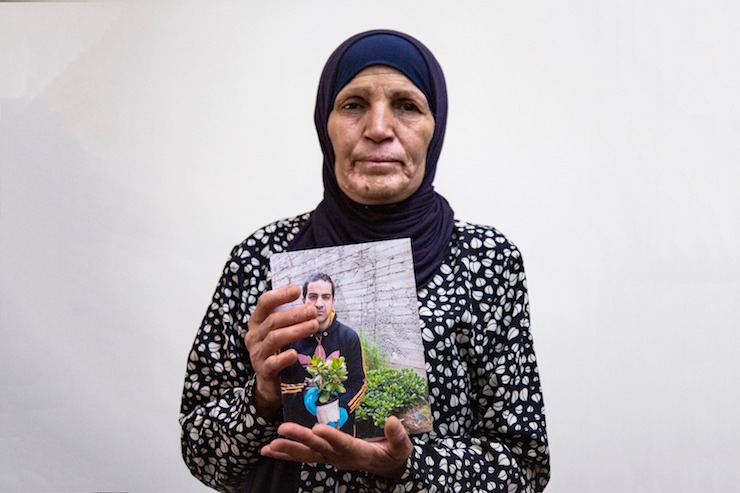
In Bishara’s view, “the systematic nature pertains not only to opening fire, but also to the way that the system decides to defend the shooters instead of investigating the cases and put those responsible on trial, or to learn lessons from these incidents.”
‘Lack of violation’
The first case Adalah looked into was that of Fadi Alloun, who was shot dead by police officers in the Jerusalem neighborhood of Musrara on October 4, 2015. According to the police, Alloun had stabbed a 15-year-old Israeli and continued running with the knife.
A video of the incident shows that Alloun did not pose a threat to any civilian or police officer when he was shot. Rather, it shows police officers exiting two police vehicles and firing a fusillade of bullets at Alloun, while Israeli onlookers egg on the police with cries of support. The officers and civilians then walk to Alloun’s body, flipping him over with their feet.
Alloun’s family demanded Mahash investigate the killing. Adalah, which represented the family, challenged the State Attorney’s 2016 decision not to open an investigation for “lack of violation.” The State Attorney’s office officially closed the case this past year.
Video of the police shooting of Fadi Alloun
A second case was that of Ahmad Abu Sha’aban, who was 22 years old when he was killed by Israeli police near the Jerusalem Central Bus Station on October 14, 2015. According to a police statement, Abu Sha’aban stabbed and injured a woman before trying to get on a bus full of passengers. The bus driver closed the door before he could enter, and Abu Sha’aban began to flee the scene. A policeman who was in the area chased him and shot him. A video documenting the killing shows a wounded Abu Sha’aban lying on the floor, not posing a threat to police or civilians, when a policeman standing close by shoots him several times and kills him.
Adalah and fellow NGO Addameer filed a complaint to Mahash, but in June 2016, the unit announced that the case had been closed, again because of “lack of violation.” Adalah appealed the decision, but in August 2019 the State Attorney decided not to reopen the investigation. The reason given was that the video of the incident was “low quality and was shot in the dark in an unlit area,” as well as being “short and partial, beginning only from the moments of the shooting itself.” As such, the attorney’s office argued that “without any other forensic findings, the incident is considered self-defense.”
The Mahash statement on the case noted that “Watching the video detached from the proximity of time between it and the stabbing incident ostensibly raises a question about the necessity of the shooting at the point at which the perpetrator is lying on the ground. There may have been room to complete the investigation that occurred immediately after the incident in order to sharpen that point.” However, it concluded that, “four years on from the incident, there is no real chance that the completion of an investigation will yield additional findings.”
Video of the police shooting of Ahmad Abu Sha’aban
A third case was that of 16-year-old Mu’taz Ewisat, who was shot dead on October 17, 2015 by Israeli police in the Armon HaNatziv neighborhood of East Jerusalem. According to the police, officers stopped Ewisat after receiving reports of a suspicious person in the area, at which point he pulled out a knife and tried to stab them. The officers shot him, and nobody else was injured in the incidents. The shooting was not recorded on camera.
Adalah appealed to Mahash to investigate the case, but in March 2017, Mahash decided not to open one because “no evidence had been submitted showing that an offense was committed [by the police].” Following an appeal to the High Court, a post-mortem was performed which determined that Ewisat apparently died of blood loss and not of the shooting itself, meaning that medical treatment on the ground could have saved his life. Adalah appealed the Mahash decision, but it was dismissed.
In a fourth case on February 19, 2016, Border Police officers shot dead Mohammad Abu Khalaf at Damascus Gate in East Jerusalem, after Abu Khalaf stabbed and wounded two officers. Videos from the incident show police firing many shots at Abu Khalaf, aimed at his upper body. The shooting lasts several seconds, and the police continue firing at Abu Khalaf even when he is already lying on the ground.
After receiving a complaint, Mahash conducted an investigation, questioned a police officer, and went over the videos documenting the shooting. In April 2016, Adalah filed its own complaint with Mahash on behalf of the family; but in June 2016, Mahash decided not to open an investigation because, again, “no evidence was submitted that an offense was committed.” Adalah appealed this decision in 2017, and their appeal was rejected the following year.
Video segment on shooting of Mohammad Abu Khalaf
In a fifth case on October 12, 2015, Israeli Border Police shot dead Mustafa Khatib in Jerusalem, after, according to police, he tried to stab an officer near the Old City’s Lions Gate. The officer was not injured because he was wearing a stab-proof vest.
A complaint was filed with Mahash, but in March 2016 it decided to close the case due to “lack of violation.” Adalah and Addameer filed an appeal against this decision, which was referred to the Appeals Department in August 2016. In February 2017, the State Attorney’s office rejected the appeal. The decision stated that although Khatib had escaped from the police, there was a fear that he would harm civilians on the street to which he had fled. In response to the lawyers’ claim that no comprehensive investigation was carried out, the office argued that since there was no suspicion that an offence had been committed, no further investigative actions were necessary.
Jewish and Arab suspects treated differently
In the incident at Damascus Gate last week, as with the other cases detailed here, the authorities emphasized that the police’s decision to shoot Salima was made in an instant. State Attorney Amit Isman explained that the investigation was closed because the event “lasted only a few seconds, in circumstances where there was a real and tangible danger to the lives of the soldiers and civilians in the area.” The Police Commissioner, Kobi Shabtai, echoed this and said that “in a terrorist incident, the soldiers and police officers are required to make a decision in a split second — and they made the right decision.”
However, as Forensic Architecture director Eyal Weizmann described in a 2017 lecture, that “split second” can often be long enough for a racist calculation to be made in the minds of soldiers and police officers. The question we should be asking, Weizmann argues, is: what is the connection between a shooting incident, and the wider reality that made the incident possible?
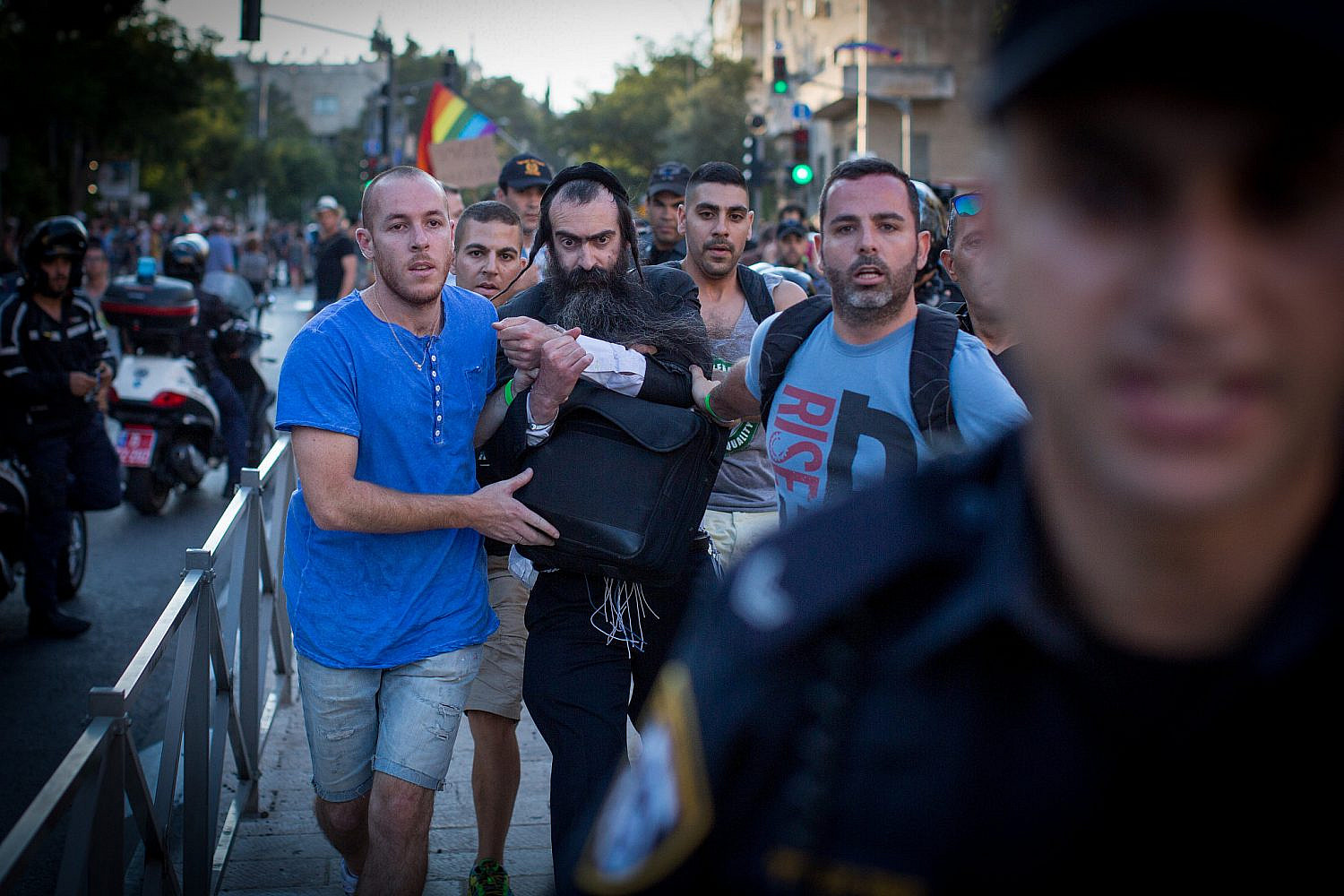
An example to illustrate how split second decisions are made based on the political context is the fact that Jewish terrorists — such as Yishai Schlissel, who stabbed participants in the Jerusalem Pride Parade of 2005 and again in 2015 — are not shot dead by the Israeli police. In fact, Schlissel was arrested unharmed, despite holding the large knife with which he stabbed 16-year-old Shira Banki to death and wounded others.
Adalah’s Bishara notes that police officers are supposed to be trained to respond to such cases without killing the suspect. However, she said, when it comes to Palestinians, “All documented cases showed that shooting was the first means. Security personnel are expected to act in a more calculated and professional manner in order to neutralize the danger, not in order to kill.”
According to Bishara, “the claim that [the police] are acting out of a sense of immediate threat is not true, at least in most cases. In some of the cases where it does emerge from the documentation, the shooting continues even after the danger was neutralized — the person was already lying on the ground, and yet shooting continued.”
Even under the open-fire regulations issued by the National Police Headquarters, lethal fire is to be carried out “as a last resort, with due caution, and only in circumstances where there is a reasonable relationship between the degree of danger arising from the use of the weapon and the result that is sought to be prevented.”
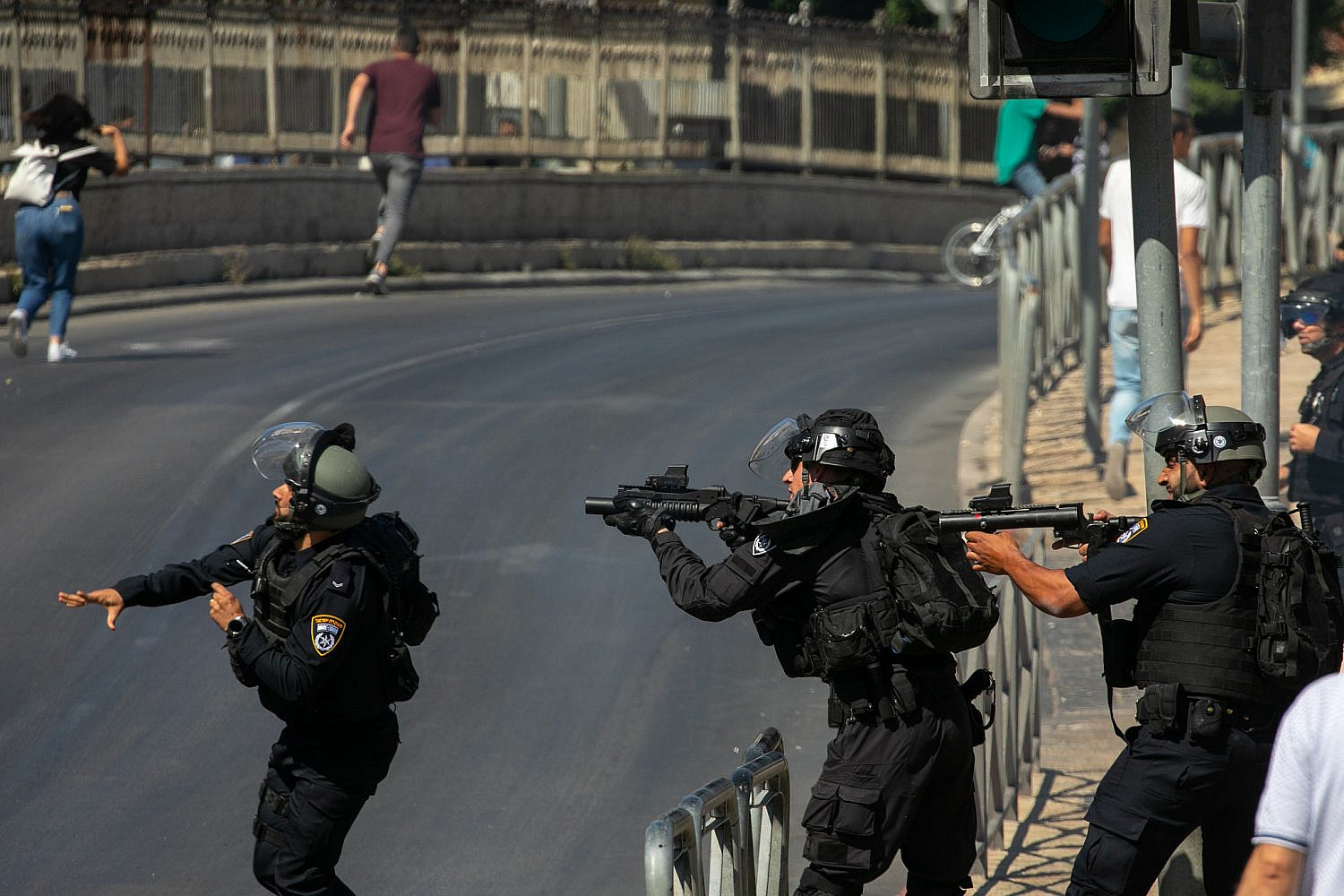
Bishara added: “The difference we see in how the police officers function in front of a Palestinian suspect compared to a Jewish suspect shows that they know how to function differently. The accumulation of these cases clearly shows that there is a difference on the basis of race or nationality.”
Last year, an investigation by +972 and Local Call found that in six years, police officers shot and killed 16 civilians in Israel and in occupied East Jerusalem in incidents that were not defined by the authorities as “security-related;” so far, no officer has been convicted. In recent years, in incidents that were both declared security-related and those that were not, police officers have been indicted in only two cases: those of Ethiopian-Israeli Solomon Teka and Palestinian Iyad al-Hallaq.
A version of this article was first published in Hebrew on Local Call. Read it here.

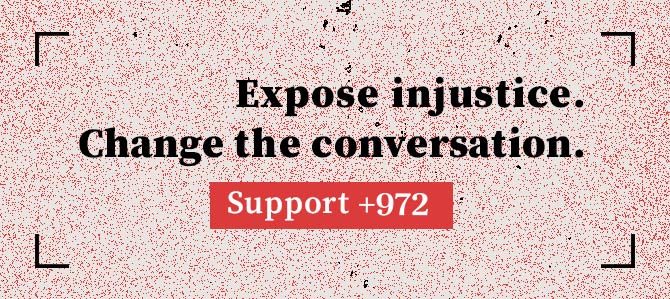



Geen opmerkingen:
Een reactie posten